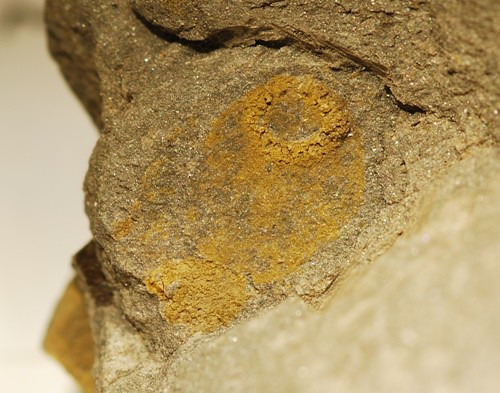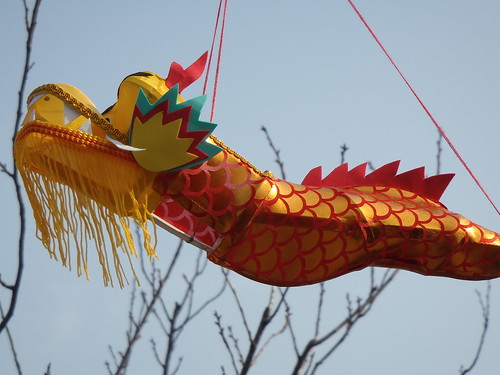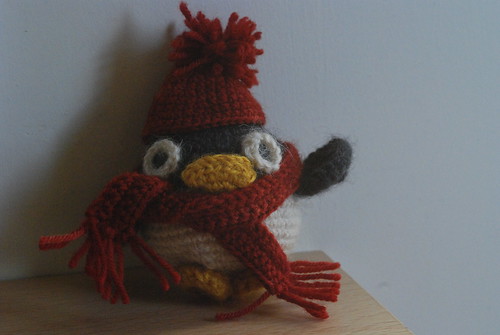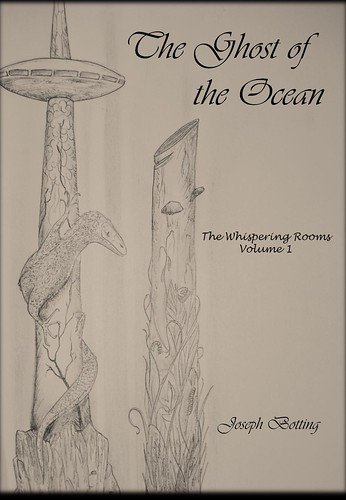Top o’ the mornin’ to ye. Lucy's still sunning herself in the desert, finding sponges, arthropods, and who-knows-what, so you're stuck with me again. Once she's back we're hoping to have - shock, horror - a brief holiday, and go somewhere spectacular. Before then, though… time for some more fossils.
This is based one of our papers, just out in the open-access online journal Palaeontologia Electronica, published by the Palaeontological Association. At some point we'll write about the whole debate over science publishing, but suffice to say that open access is a Good Thing. Did you know that authors have to sign away their copyright to the journal, and are often asked to pay a few hundred pounds for the privilege, before the journal sells the paper at £30-40 a go, and charges ridiculous subscription charges for academic libraries, with no royalties whatsoever to the authors? Palaeo Electronica isn’t the highest-impact journal, but it’s one of the ethical ones. Anyway, that’s for another day. The point here is that you get to read the paper for yourselves, should you be that way inclined:
http://palaeo-electronica.org/content/2012-issue-1-articles/191-welsh-holothurian-bed
In outline, what we’ve got is another fauna from the Ordovician of Wales with some exceptional preservation of squidgy things in it. Unlike the Llanfawr fauna we talked about before, this isn’t in some nice useful exposure like a quarry – it’s a tiny, crumbling bank of shale with trees on top, on the side of a stream valley that’s so dim you can barely see anything on a hot summer day due to the thick canopy. The shales are deeply weathered, and although there was pyrite there once (good for X-radiography, remember) it’s not there anymore. What we’re left with are rusty shapes on crumbly grey rock, which we can’t see until we’ve got out into the open.
The reason we bother with it is that there are – you guessed it - sponges! Lots of sponges. There are probably a dozen new species. There are also palaeoscolecid worms (we’ll go into those when the paper comes out in the next couple of months), trilobites (yawn… no, they’re cute, really), and various other gubbins. The gubbin that is most exciting, though, is a small number of sea cucumbers.
Sea cucumbers do not appear as fossils very often. Unlike their cousins the sea urchins and starfish (all included in the echinoderms), they don’t have a rigid skeleton. The plates of an urchin’s test have been reduced to tiny sclerites (rather like sponge spicules) embedded in a leathery skin. The only really robust bit is a ring of plates around the pharynx, which you can see in the photo. They’re truly delightful animals – the only things I know of whose defence mechanism is to spit their intestinal tract out at anything that bothers them. It’s ok – they grow a new one afterwards. Just down the road from us is a restaurant that advertises, “Specialist in Sea Cucumber!” so obviously someone else appreciates them too.
Anyhow, although they turn up regularly on reefs, sea cucumbers really come into their own on the abyssal plain. Great herds of them march across the muddy plains, filtering yummy marine snow out of the water, or digging through the mud for delicious little morsels. They’re one of the most abundant large animals on the planet, where some authors say that they make up nearly 90% of the deep marine animal biomass. They also have many clever abilities, such as buoyancy control and burrowing ability, which is all quite impressive for something with no brain.
One of talents they don’t have, though, is being fossilised. There are very few examples of complete fossil holothurians, with the oldest until now being the Late Silurian of Australia, 50 million years later. There are some isolated, microscopic sclerites and plates from the same sort of age as ours, but until now, no whole ones. At this stage, I should explain what’s important about the Middle Ordovician, regarding echinoderms. There are numerous extinct groups of echinoderms, but the living ones all appear in the Ordovician (except the concentricycloids, but they’re just weird, and are probably merely a strange group of starfish). The crinoids appear in the earliest Ordovician, the starfish (in the form of the extinct somasteroids) around the same time, followed by the true starfish and brittle-stars, and then finally the sea urchins and holothurians. The latter two appear for the first time in the Middle Ordovician; in fact, we’ve got the oldest sea urchin too, but that’s not published yet. They are also believed to be very close relatives, so the earliest ones should show features that are somewhere between those of the two groups…
Until now, that really wasn’t true – and in a way, it still isn’t. There’s a truly bizarre extinct class of echinoderms called the ophiocystioids that might be close to ancestral holothurians, and the bothriocidaroids appear to be an early branch off the sea urchin lineage, but there’s really nothing that shows anything like a clear transition between the two groups. Ours helps a little bit, in that it’s got traces of a sea urchin-like skeleton in the form of reduced ambulacrae – the lines down the side of an urchin, where all the tube feet go. These skeletal ambulacrae are completely lost in modern holothurians, which makes the feature particularly important, and it actually ties in with some predictions made years ago by a German researcher. Isn’t it nice when science actually works?
There’s still a fundamental question remaining, though – where did they come from? Both urchins and cucumbers appear in the fossil record in the Middle Ordovician, in obviously primitive but still recognisable forms. There’s nothing obviously related before them, and there’s nothing (except ours) that’s clearly intermediate. We now have diverse Early Ordovician faunas like the Fezouata Biota, replete with abundant echinoderms, but nothing there that could be closely related to urchins – although there they do find somasteroids in abundance, along with edrioasteroids, which might be the ancestors of them all. The fossil record is pushing us towards thinking that these groups really did evolve in an extremely short space of time…
The thing to remember, though, is that the fossil record lies. It hides things. It gives you glimpses, and then pretends that the rest isn’t really there. Anything living in shallow water, for example, tends to get obliterated before it even has a chance to be fossilised. Our undescribed urchin is from Llandegley Rocks – conveniently, a shallow-water deposit preserved due to being on the side of a subsiding volcano. Coincidence? Maybe. Or maybe the urchins and cucumbers really did evolve in the Early Ordovician, but in a place where we can’t – yet – see them. Time to get the hammers out again, then.
Friday, 16 March 2012
Prehistoric cucumbers
Saturday, 3 March 2012
There's nowt as queer as Folk
Brian Boru's March a video by joe with a camera on Flickr.
Hello again all… Lucy’s on her way to Morocco at the moment, so you’re stuck with me again, in cold, murky Nanjing. It’s trying to be spring, but not quite managing it yet. We did promise all sorts of random discussions on here, so this one is going to be more random than most…
There we were the other day, sitting in Finnegan’s Wake (the local Irish pub) and listening to the Irish Rover (or something), and the discussion started meandering over what makes something folk music. We ended up getting tied up in so many knots, and having to think about so many different things, that we decided we ought to write some of it down. As you may know, we both sing a bit of traditional folk, while I do a spot of harping and Lucy flutles (flauts? flaunts?), with a bit of persuasion. We used to go to folk clubs in the UK, and were often struck by what many people were performing. To us, Bob Dylan isn’t folk. Neither is Simon and Garfunkel’s stuff. They may be very nice, and perhaps one day we will class some of it as folk music, but not yet, surely? But then, why not? And what about Enya? Was everything that Clannad did folk, or Runrig? It started to get quite complicated…
When we personally talk about folk music, we mean the really traditional stuff – you know, at least a century or so old, and (if it’s a song) preferably in a long-lost Celtic language. Or Elvish. But obviously, there’s more to it than just the age – a lot of classical and religious music goes back just as far. Of course, one doesn’t dress up in black tie to go to a folk concert, and a typical folkie in the ballet theatre would stand out a mile, so there must be a deep division somewhere. So what other differences are there, besides calling a violin a fiddle?
You could argue it was partly down to the instruments, but there’s a lot of similarity. Some of Rodrigo’s solo guitar stuff could almost *be* a folk rendition, and a lot of the folk instruments have near-exact (although admittedly grander) counterparts in classical circles. Except perhaps bagpipes… can you imagine a ‘Great Highland Pipe sonata in E minor’? No, don’t even try. [Edit: just checked, and Bartok, believe it or not, did indeed write a bagpipe sonata. And he’s not the only one.] You could find differences in the style of the music, perhaps, but how much of the classical repertoire is based on folk melodies? Mazurkas, anyone? The point is that there are a lot of points of overlap, and occasionally it’s very hard to tell the difference.
Eventually we decided it was all about the purpose and meaning of the music, and what you’re allowed to do with it, rather than anything about the music itself. Modern pop music is mostly about the performer – the good old celebrity. They can cover someone else’s song, but people talk about the singer rather than the song. Classical seems to us to be about the performer some of the time (but only really when you’re dealing with the best), but more often it is the composer – it’s the perfect arrangement of notes written down a century ago, and the arrangement of notes must remain. Of course, there are ‘fantasias on a theme of…’ – but these also are fixed. They are like paintings: to be admired in the form in which they were created. Leeway is allowed in the interpretation and intonation of the notes, but the notes themselves must remain. I remember once when Pavarotti hit the news for making three mistakes in a concert. The crowd were screeching for their money back. When Loreena McKennitt started singing the wrong song, everyone laughed along with her, and the poor confused musicians thought it was hilarious.
Folk tunes, in contrast, are about as loosely defined as it gets. Usually only the melody is written down – you’re meant to make up the harmony as you go along. Better than that, though, is that the tunes themselves are flexible. They’re often organised simply, with several repetitions of a primary section, and the musician is actively encouraged to make twiddles and add squiggles here and there, as they see fit. And what about the lyrics? They’re even more subject to change: for old songs, there are often numerous versions in circulation, and you can pick up different verses of old favourites from buying a new recording. Of course, being out of copyright helps a lot…
Perhaps the best example of this is “Two Sisters” (or numerous other titles, including “The Bonny Swans”, and “Dreadful Wind and Rain”). The basic story is that two sisters walk along a riverbank (or the sea), and the older pushes the younger in. She refuses to help her out unless the poor girl gives her ‘her own true love’ (or some variation on that). The girl drowns and gets swept away, eventually being found by a miller, his daughter, or a passing minstrel. Usually, she gets made a harp (yes, yes, I know… just accept it, right?), and eventually gets taken back to her old home, where she spontaneously sings a song (yes, you can do things like that in faerie tales) denouncing her sister. There are hundreds of versions across Europe, in many languages, and no-one even knows where the original came from.
It works backwards too – popular lines can be transplanted into entirely different songs, and turn up anywhere. An example of a ‘floating line’ is “I leaned my back against an oak, thinking it was a trusty tree; but first it bent, and then it broke, and so has my love done to me” – a popular sort of theme for folk songs in general.
So what’s it all about, then? It’s partly about the performer, but it’s noticeable that the most successful Celtic folk musicians tend to diverge more and more from the traditional tunes and move towards creating their own. Enya, for example, started out with Clannad, but wanted to perform her own, more commercial material. Interestingly, Clannad also headed in the commercial direction, but their early recordings are almost entirely traditional tunes. Many of the best folk musicians today (e.g. Julie Fowlis) are almost unknown outside followers of the genre. I have some beautiful cds for which I can’t even remember the singer’s name. Somehow, though, that doesn’t really matter.
So folk does not centre on the performer, and obviously not the composer. The lyrics and the notes are flexible, and the instruments and style, although they tend to conform to certain stereotypes, also overlap with classical. We decided the answer was that folk music is about the meaning of the music rather than the outward appearance. The songs reflect moral lessons or helpful ways to think about things in order to overcome one’s own difficulties, or they are ways of remembering old stories. In many ways, folk songs are like faerie tales, or the stories told around campfires. The tunes themselves, like all music, carry with them emotions and atmospheres, but most of the folk tunes I know of that have no songs attached are for dancing to. There are slow tunes – airs – as well, but these inevitably seem to have lyrics added, if they’re weren’t around originally. The musicality of folk is really just for the sake of being musical; it’s not the main purpose of it. There’s a joyousness in folk performers that you rarely see in other types of music (except jazz, maybe).
So there you have it; I’d like to think that folk really is primeval. It’s maintaining what music was first made to do: as a way of remembering things, of passing on stories and ideas about what really matters. But perhaps the true folk tradition is an anachronism in the music world today, because the situations it refers to don’t really happen nowadays? I think I’d disagree – the situations are the ones most fundamental to the human world, even if the specific examples are long gone. These songs are mostly about life, love, and loss. Perhaps they can’t solve all your worries, but at least you can share them with long-lost minstrels, and know that someone understood.
As a final word, I’m also glad to say that Wikipedia seems to be having as much trouble defining folk music as we are. There’s much more to the discussion over there: http://en.wikipedia.org/wiki/Folk_music
Sunday, 5 February 2012
A little taste of almost home
One of the things that the Chinese don’t really do is ovens. Big industrial ones, yes, but not little domestic ones for home baking. There are times when one feels the urge for a home-made cake or a quick batch of rock buns, and this is of course impossible without an oven. So, on fieldwork this summer, we invested in a copy of “Welsh Bakestone Cookery” by Bobby Freeman. Bakestones (or griddles) are a way of cooking cakes on the stovetop – perfect for our situation.
Needless to say, actually making something wasn’t quite as simple as reading the recipe book, deciding which one sounded yummiest, and doing it. For a start, most of the recipes involve baking powder, which of course isn’t available here, because no-one has an oven. This difficulty was solved by a quick trip to the supermarket on our visit to the US in October last year (which also yielded ground coffee, hot chocolate and an external hard drive for backing up all our data). I bought what is probably wheat flour in the local supermarket here in Nanjing – I can’t read the label, but it’s the right colour and isn’t made from rice (I know that character). The local supermarket also yielded the other necessary ingredients, with the exception of mixed spice (I found time to visit a supermarket in the UK over Christmas).
So, ingredients gathered, we decided to make welshcakes. This is the first recipe in the book, so presumably the simplest, and Joe has often eaten them so he knows what they’re supposed to be like. Lacking a mixing bowl or pair of scales, we used the bowl of the rice cooker and the “oh it looks about right” method. Instead of a griddle, we used the wok. Amazingly, the cakes turned out delicious, although Joe says that they’re not really Welshcakes. Obviously more practice is needed!
Wednesday, 25 January 2012
Happy New Year!
In case you think we're really behind the times, it is of course Chinese New Year. the buses are empty, there are charred scraps of red paper blowing in the gutters, and Lucy's currently working on the laptop while snuggled up in bed - Ah, the good old Nanjing winter!
This year falls under the Dragon's influence in the Chinese Zodiac, which is strangely appropriate, as we both do as well. Lucy's close to being a rabbit, it must be said, but you only see that side if you offer her a carrot. Apparently dragons are very independent, and work best on their own (oh dear); they prefer to live on their own terms and not be ruled by others, while they go about their creative things, eccentric experiments, or whatever. While this might sound strangely familiar, I've always had some problems with the concept that everyone born in that year operates the same way. Every twelve years it would be total anarchy... but then, perhaps that's why the school year doesn't coincide with the Chinese year, but is almost six months out - a schoolyard filled with an even mix of rabbits and dragons does more-or-less fit my memories...
Anyway, what I hadn't realised was that the Chinese Zodiac also goes through a cycle of the five elements. This is the year of the Water Dragon, who is by all accounts a very reasonable sort of beast. Apparently they counteract the blazing emotions and recklessness of fire dragons (guess what we are... reckless? really? Well, I guess we did decide to come out here in the first place). You've got to say, though that the prospect of schoolrooms filled with a year's worth of fire dragons is rather a terrifying prospect.
Anyway, enough of this silliness. the festivities went off in true Chinese style (as always, click on the photo to get to Flickr, where in this case there's a little video of the fireworks from our window). We were hoping to find lots of photogenic, noble-looking dragon statuary and ornaments, but there are almost none to be seen. The official dragon is a strange deer-like thing that's always depicted as a cartoon or a fluffy toy. Someone hasn't read the stereotype... either that, or everything is aimed at children, which is quite likely. After all, go to the UK at Christmas, and how often do you see a non-stereotypical, jolly Santa? I guess these celebrations are not really about the meaning any more, here or back home. It's the occasion that matters nowadays, the giving of huge boxes of oranges (very nice ones, but we'll be eating them for weeks), and the chance to go join the crowds at the fair and win a stuffed Garfield.
Having said all that, guess where the biggest crowds we saw were? Not at the parks, but at the entrance to the local Jiming buddhist temple. Yes, there were loads of balloons with Winnie-the-Pooh and similar local characters, but in an officially non-religious country, this mass attendance suggests that at least some of the traditions are deeper-seated than just enjoying the festivities...
Thursday, 19 January 2012
News from the canine fashion world
We've now been here a year (wow... I can't decide whether it feels much shorter or much longer...), and the time seems right for a few balanced impressions about this strange, confusing and strangely endearing country we've ended up in. Perhaps slightly oddly, I can't help thinking that this poodle sums a lot of it up rather nicely.
Never before, anywhere, ever, have I seen a dog wearing trainers. Eating them, yes, but not wearing them. Add to this the rather natty coat and headwear, and you have one very smart-looking pooch. It's surreal. It's utterly daft, and in the UK hardly anyone, I dare say, would have the nerve to be seen out with such a sophisticated companion. Aside from the jeers and laughter, such an owner would doubtless be worried about being upstaged - and we couldn't have that, now, could we?
In China, the bizarre (by our standards) is commonplace. No-one bats an eyelid at young women wearing what can only be described as wedding dresses (or the ultimate in ball gowns) while out shopping. Nor do people seem to notice someone pausing in their walk through the woods in order to let out an immense, ear-splitting yell. Well, of course you wouldn't notice, would you? It's just someone out doing some exercises.
I get the impression that people here generally do not care about irrelevant appearances all that much (how else to explain the spectacularly noisome dustbins just outside the front door of a swish restaurant?). What matters is whether something works, and whether it happens to be what you have.
There is a huge gap between rich and poor here, but the great majority are in the poor end. I'm sure there's envy, but on the other hand, the rich are clearly distinct and not really relevant to most people. Among the normal townsfolk, everyone seems remarkably equal. Whether dressed in ragged robes or a natty coat and four matching trainers, you're just as worthy of a seat on a bus, or being served in a restaurant. Perhaps someone has very little money; that's just the way it is. Perhaps someone wants to dress up to be completely over the top; that's fine too - it's their choice entirely, and they're not going to get laughed at because of it.
On the other hand, there are the apparent paradoxes. This acceptance of other people's behaviour (within reason, if not *reason*) is not a lack of interest; the Chinese people in general are intensely sociable, and very interested in what other people are doing. They seem to manage this without being judgemental, though, which for westerners like us is a beautiful novelty. Although we get a lot of attention [It's the beard - Lucy], it's always amicable or simply curious. We get people staring at us, wanting to have their photos taken with us, and so on, but it seems to be a genuine interest. Never once have we felt the hostility that many overseas pioneers have met with in the UK. It's just not part of the culture.
I think perhaps that this openness to new ideas or surprising discoveries is what explains that self-satisfied poodle. It's like the cake shops, you see. They've taken the idea of a cake (completely alien a few decades back, I'm guessing) and taken it to extremes. There are dozens of little patisseries around now that have an extraordinary selection of startling creations, smothered in icing and little creamy parapets. Bored with plain cake? Then go for one of the ones with a layer of ice-cream instead. Why not? Like everything else that goes on in China, it works.
And so, back to the poodle. It looks ridiculous? Fair enough, but it's warm, and its feet aren't cold and wet. And nobody they walk past seems to care... but I bet they do, really. I bet half of them are thinking about doing the same, if they've got a dog. If they can't afford it, they're probably thinking about sewing up little booties themselves. Because, you see... it works.
And that's why they can complete the biggest engineering project in the world ahead of schedule and under budget - and why they're rapidly taking over the world's economy. They take whatever works and improve on it, without worrying too much about whether it sounds silly or might be embarassing. And that is one of many reasons why the country is so beguiling for those who get to spend some time here. Let's hope we can unravel some more facets over the coming year. After all, we're probably completely wrong, and anyone Chinese reading this will probably be laughing uproariously. But we'd like to think they won't mind our misconceptions, and will take them in the spirit in which they're meant. If you're reading this: perhaps we'll never understand this extraordinary country, but we're going to have fun trying. :)
Wednesday, 4 January 2012
Happy New Year!
Happy New Year (the first New Year of the year) to all our readers!
We’ve been in the UK for a few weeks, visiting two museums, two universities, one library, one dentist and eleven relatives, as well as doing conference presentations. Internet access has been extremely limited lately, hence the lack of blog posts. We’re now about to fly back to China, and hope to be updating the blog more regularly this year.
In the meantime, here’s a nice picture of the penguin I made with the turmeric-dyed yarn I blogged about a few months ago. As you can see, the dye worked very well. The penguin complained of being cold (I thought they were supposed to like that, but apparently not) so I had to make a little hat and scarf too.
Sunday, 11 December 2011
And now for something completely different...
From the sublime to... well, you get the idea. Some of you know I've been trying (and often failing) to write a series of fantasy books over the past few (well, fifteen) years. Thanks to the wonders of Kindle, I've finally gone and published the thing. You know how people always say how hard it is to get something into print? Well, it's true - unless that's just because mine's awful, of course...
Anyway, it's with a strange sense of trepidation that I can say that 'The Ghost of the Ocean', being the first part of 'The Whispering Rooms', is now available for the purpose of immediate boredom-relief* to anyone with a kindle (or kindle app on their computer, of course). It's only available through Amazon at the moment:
http://www.amazon.co.uk/Ghost-Ocean-Whispering-Rooms-ebook/dp/B006KRI97I/ref=sr_1_3?ie=UTF8&qid=1323668895&sr=8-3
Apologies for the interruption to your scheduled fossils, knitting and random burblings about China. Normal service will be resumed shortly.
*No guarantees, mind. For those unaffected by the alleged boredom-relieving properties, I propose to advertise it as an over-the-counter soporific instead.






